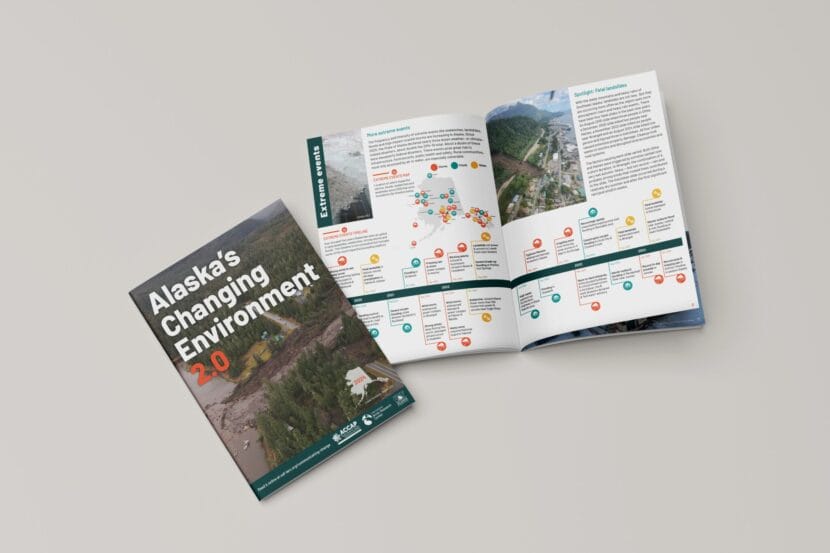
When Rick Thoman looked ahead to 2024, one big project was on his list. The veteran climate specialist set his sights on updating 2019’s widely-distributed “Alaska’s Changing Environment” report, posted online by the International Arctic Research Center.
“This report is now more than four years old; it’s still getting thousands of unique hits a month on the IARC website,” Thoman said. “And so that told us that this kind of report had enduring value to people in Alaska and beyond.”
IARC teamed up with the University of Alaska Fairbanks and Thoman’s employer, the Alaska Center for Climate Assessment and Policy.
More than 35 people were brought on to contribute to the project — double the number of the first version. Key contributors like IARC’s Brian Brettschneider returned to the project while several new names entered the mix.
The cover, an aerial shot of a 2023 landslide in Wrangell that killed six people, sets a poignant tone for the report. As the name suggests, Alaska’s environment is changing — and its creating new challenges for Alaskans. Thoman said the wording of the title was intentional.
“We specifically did not want ‘Alaska’s Changing Climate’, because the impacts of that changing climate are what people really feel,” Thoman said. “Those are the kinds of things that impact people, and they impact our land and our resources right down to what’s for dinner tonight.”
To help a wide audience understand those changes, sections like winter precipitation begin with the broad statement, “most of Alaska is seeing more mid-winter snow.” Typically, such statements are followed up with a very simple explanation like, “This increase is driven by warmer temperatures that enable air to hold more water vapor.”
Thoman said he worked in tandem with ACCAP’s science communications lead, Heather McFarland, to break things down to the simplest terms.
“Heather will go through and say, ‘That’s jargon, I don’t understand this,’ ‘Oh, that’s good,’” Thoman said. “Heather will do that with text from other experts as well, to get that into the style that you see there.”

While not new, Indigenous voices are now sprinkled throughout the report. The insights provide anecdotal evidence of the changing environment, like a story shared by Seldovia’s Stephen Payton.
“Elders also say to wait to pick until after first frost, but now the berries are ripe before that point,” Payton shared at an Alaska Berry Futures listening session.
These changes are prompting questions about how Alaskans should respond, both at the local and legislative levels.
“We certainly hope and expect that this information will help to inform some of those discussions, because we’re providing this information in a non-technical way that anybody that’s interested can get to,” Thoman said.
Printed copies of “Alaska’s Changing Environment 2.0” are headed to the American Geophysical Union’s annual meeting in Washington D.C next week. Digital and web versions are available at IARC’s website.